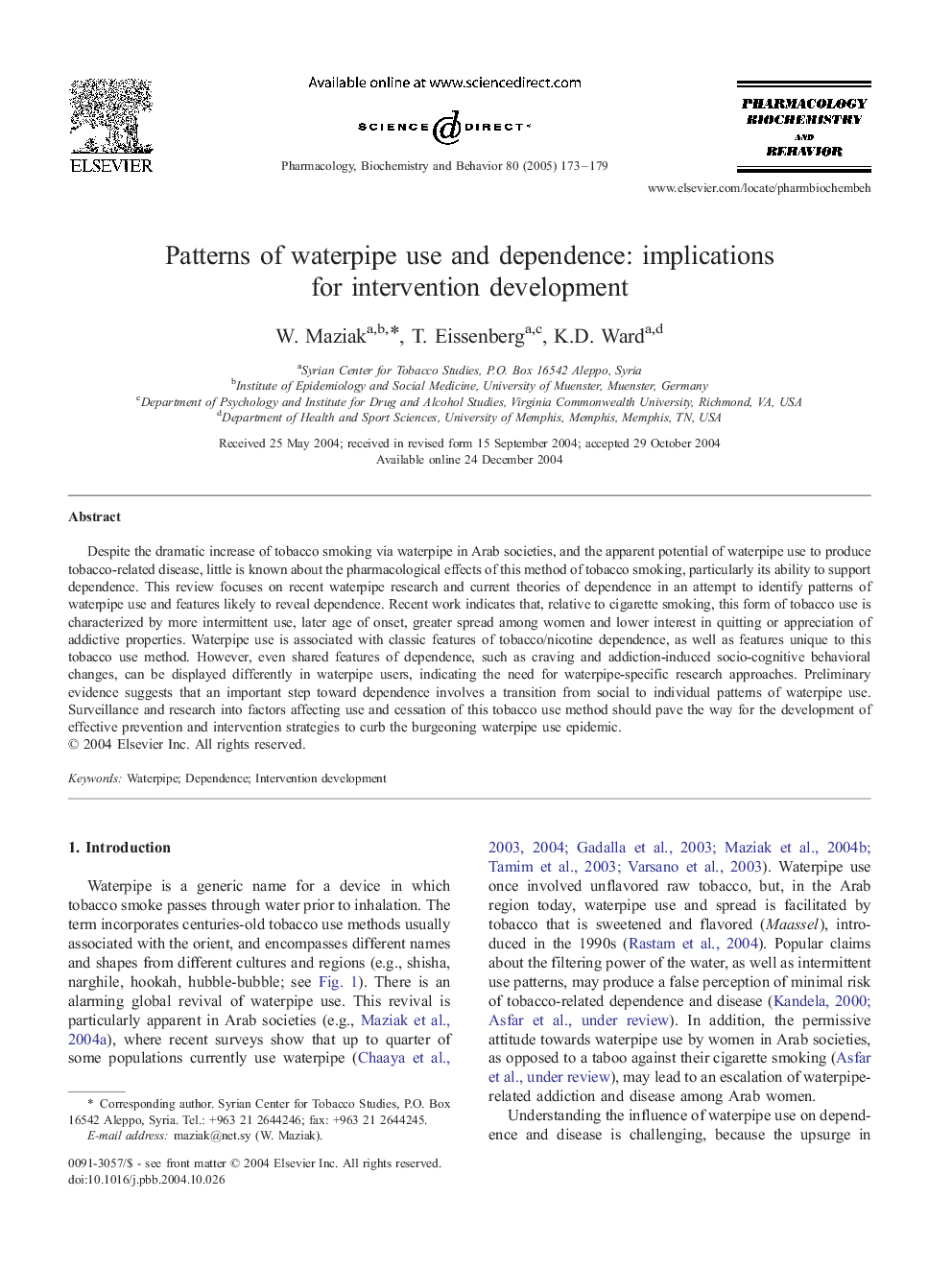| Article ID | Journal | Published Year | Pages | File Type |
|---|---|---|---|---|
| 10838603 | Pharmacology Biochemistry and Behavior | 2005 | 7 Pages |
Abstract
Despite the dramatic increase of tobacco smoking via waterpipe in Arab societies, and the apparent potential of waterpipe use to produce tobacco-related disease, little is known about the pharmacological effects of this method of tobacco smoking, particularly its ability to support dependence. This review focuses on recent waterpipe research and current theories of dependence in an attempt to identify patterns of waterpipe use and features likely to reveal dependence. Recent work indicates that, relative to cigarette smoking, this form of tobacco use is characterized by more intermittent use, later age of onset, greater spread among women and lower interest in quitting or appreciation of addictive properties. Waterpipe use is associated with classic features of tobacco/nicotine dependence, as well as features unique to this tobacco use method. However, even shared features of dependence, such as craving and addiction-induced socio-cognitive behavioral changes, can be displayed differently in waterpipe users, indicating the need for waterpipe-specific research approaches. Preliminary evidence suggests that an important step toward dependence involves a transition from social to individual patterns of waterpipe use. Surveillance and research into factors affecting use and cessation of this tobacco use method should pave the way for the development of effective prevention and intervention strategies to curb the burgeoning waterpipe use epidemic.
Related Topics
Life Sciences
Biochemistry, Genetics and Molecular Biology
Biochemistry
Authors
W. Maziak, T. Eissenberg, K.D. Ward,
